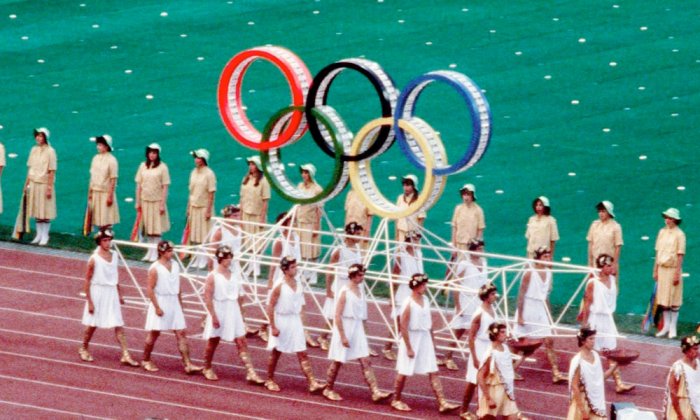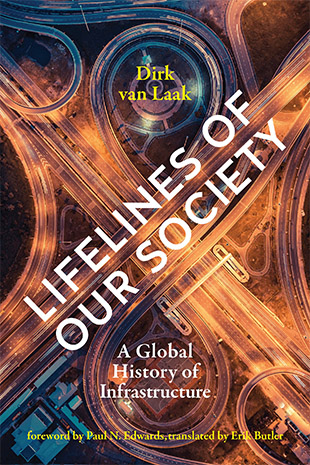The Promise and Pitfalls of Mega-Projects: Lessons From History

A few years ago, a sourcebook on the 1980 Summer Olympic Games, which took place in Moscow, was published in Russia. The volume documents the potential of “exceptional events” to revitalize existing infrastructure, but also dissects the many ways in which such projects can fail. The Soviet Union had applied to the International Olympic Committee to host the international competition in 1956; not until 1974, when a favorable political constellation emerged during a period of détente, did Moscow receive the commission. Now, the Soviets had to invest in facilities and accommodations.

Transportation and communication needed improvement, security and energy supplies had to be bolstered, and measures for minimizing environmental impact were taken. The wheels were promptly set into motion. But preparations coincided with economic stagnation, and Soviet leaders recognized, as early as 1976, that meeting expectations would prove impossible. The Games were nearly canceled. Ultimately, they were held after all, because the loss of face would have been too great.
Like many large-scale projects, the undertaking followed a course of its own. Cost-cutting measures and time pressures meant that standards of quality sank and undermined the soundness of facilities. Plans for expanding the highway ring around Moscow and other roadways fell behind schedule. So that public transportation would be available to foreign visitors, authorities limited its use by Soviet citizens during the Games.
Preparations coincided with economic stagnation, and Soviet leaders recognized, as early as 1976, that meeting expectations would prove impossible.
One residential complex under construction was converted into an Olympic village, and the organizing committee found it necessary to import almost all the television technology for broadcasting events from the United States. Worse still, almost as soon as the slapdash arrangements were more or less done, in 1980, the United States and a sizable number of Western countries announced that they would not be participating because of the Soviet invasion of Afghanistan the previous year. All the same, former residents of the Eastern Bloc remember the Olympic Games as one of the last great events before the collapse of the Soviet Union — a grand, symbolic display of state socialism. Without much competition, the Soviet Union and its allies had many occasions to celebrate victory.
The United States would also come to appreciate that massive projects can sometimes bring short-term investment and commercial surplus but rarely pay off in the long term for a wider public. Indeed, economic analysts have concluded that neither richer nor poorer countries should expect an event such as the Olympics to fuel growth. Benefits are minimal for wealthier hosts, and the burden on budgets for less well-to-do nations proves excessive. Thus, the 2004 Olympic Games in Athens contributed more to Greece’s national debt than to infrastructural development. The 2014 Winter Games in Sochi, Russia, swallowed somewhere around $25 billion (the final figure is anyone’s guess). This was the first time they were held in a subtropical city, but a good part of expenses went to building infrastructure, not to creating conditions suitable for athletic activity. Many facilities did not find a use afterward.
It would be wrong, however, to regard staging major events as exclusively prestige-oriented and always ill-advised in financial terms. A vast array of motives and expectations factor into the equation. Whether these have been realized can prove very difficult to determine.
Before the Olympic Games were revived or soccer and other world championships were held, Universal Exhibitions, which showcased industrial achievement, catalyzed intensive development. The first such fair took place in London in 1851. From this point on, exhibitions in cities such as New York, Paris, Vienna, Philadelphia, Chicago, and Milan all featured the latest technological achievements. A common feature was the infrastructural logistics developed in preparation for events. Thus, the first line of the Paris metro went into operation during the Exposition Universelle in 1900; it coincided with the opening of the Gare d’Orsay, Gare des Invalides, and Gare de Lyon, which heralded a new age of travel and transport to and from the capital. More than 50 million visitors could also admire the new Pont Alexandre III, symbolizing the alliance between France and Russia.
Large-scale endeavors of this magnitude are undertaken in a competitive global context, where showcasing the latest technological advancements provides political capital. The scholar Chandra Mukerji notes that such ambitious projects reflect state power and address a fundamental political challenge: how to unite a diverse population under a common identity.
These projects aim to win public support by forging a collective, corporate identity, employing an ancient practice known as euergetism — the practice of ruling through festivals, charitable acts, and donations. Eurgetism has persisted from premodern monarchies to the democracies of the present day. Many facilities and networks now in existence represent the aggregate of small- to medium-scale projects that have been synchronized and operate in concert. In retrospect, it may seem that thorough planning underlies the immense technological systems coordinating social life. But as a rule, this is only the case when governments pursue a program of accelerated modernization or the consensus emerges — in a specific constellation of political power — that it is necessary to catch up with advances elsewhere.
During the 1920s, policies in the Soviet Union embraced infrastructure as a means of tying together experts, political leaders, and the general population. To gain acceptance, measures not only had to promise abundance; they had to do so in terms anchored in technological know-how and be based on practices of everyday life admitting ready comprehension. When announcing the great initiatives of his communist government, Joseph Stalin engaged an army of writers — whom he called “psychic engineers” — to give dams and power plants their blessings in appropriate language. During the irrigation of the “hungry” Caucasian steppe, Soviet propaganda constantly deployed images of multiethnic cooperation — for instance, at the huge construction site of the Nevinnomyssk Canal — to promote the sense of a common cause. Organic metaphors abounded. In this way, the transformation of desert into land for growing cotton represented both a renewal and a return to the source. (In the 1970s, when it became clear that the depleted Aral Sea was drying out and disintegrating into smaller bodies of silty water, the same organicist imagery was turned against political leadership; now it evoked disease, infirmity, and decay.)
The professionals in charge of designing and carrying out projects wish for optimal conditions; after the fact, they regret only that circumstances were not more favorable. Technocratic ideology sets the tone. The premium on efficiency does much to explain why infrastructural planners have time and again proved susceptible to the lures of authoritarianism. In this light, we can understand, at least in the abstract, Albert Speer’s enthusiasm for Adolf Hitler’s vision of turning Berlin into Germania, a megacity with 10 million inhabitants. The dictator had declared,
When one enters the Reich Chancellery, one should have the feeling that one is visiting the master of the world. One will arrive there along wide avenues containing the Triumphal Arch, the Pantheon of the Army, the Square of the People — things to take your breath away! It’s only thus that we shall succeed in eclipsing our only rival in the world, Rome.… In ten thousand years they’ll be still standing, just as they are, unless meanwhile the sea has again covered our plains.
The desire to overwhelm others has rarely been voiced so bluntly, but military parades and ceremonial pageantry regularly accompany the unveiling of large-scale projects. The basic reasons are the same in Germany and elsewhere. Such measures have proved their effectiveness over and over — especially when colonial powers have sought to demonstrate the superiority of European culture.
Countless large-scale projects in Latin American, African, and Asian countries show that technocratic ideology is thriving. As ever, it presumes that economic, technical, and social problems can be solved in one fell swoop with massive development and construction. This is precisely the view that has been called into question in western Europe and the United States since the 1970s; here, only incorrigible dogmatists would claim that one best solution exists for every problem. Initiatives have given rise to more and more political and social conflict; this turn need not be understood solely in negative terms, because it is the expression of a free, pluralistic society where issues are confronted directly.
The more that official rhetoric stresses the symbolic value of a project, the more likely it is that the public will voice objections about details, and possibly the very idea of the project. Recent examples from Germany include major projects such as the Stuttgart 21 railway line and the Berlin Brandenburg Airport. As described in the book “Megaprojects and Risk: An Anatomy of Ambition,” up to the 1970s, large-scale infrastructural undertakings had an iconic value and stood for scientific and technical rationality; since then, they have turned into rallying points for protests. Almost without fail, opponents claim that decision-making has been undemocratic and the parties involved are somehow corrupt; defiant taxpayers sometimes welcome the chance to rebel against authority.
But even in pluralistic societies, governmental and private bodies continue to pursue projects that promise symbolic returns. Such initiatives require coordinating an ever-larger number of actors motivated by different considerations and goals. Financial risk is involved because funds must be spent on schedule. Politicians push for pet projects to coincide with election cycles. Companies sometimes aim for greater profits by delaying construction and pocketing contractually guaranteed monies. Building codes and fire protection ordinances (for instance, those that hindered the new Berlin airport) represent an additional factor. Regulations at the local, national, and international levels can reinforce each other, yielding a labyrinth only specialists can navigate. At times, no one has an overview of the whole.
Attentive planners have concluded that the classic high-modern scheme — integral projects designed for decades of unchanged operation — should be abandoned. Projects open to unforeseen and even unlikely developments prove more successful—especially when a balance is struck in advance between different priorities. Factors include technological innovation, shifting cultural values, social events, and considerations of sustainability. Plans should allow for correction and adaptation. Experience makes it advisable to take the possibility of intersecting processes into account.
When parties involved create irreversible conditions or conclude informal agreements in order to advance their own interests, procedures that work in the abstract are often thwarted, undermined, or bypassed altogether. Plan-approval protocols now in place have reduced these risks and offer opportunities for involvement at different levels. Still, a fair share of infrastructure planning winds up being decided by mediators — or even a judge — because members of the public manage to exploit a wide range of options for raising objections; to some extent, this happens because of NIMBY (not in my backyard) attitudes.
Studies offer detailed analysis of why projects run over budget. Added expenses creep in when responsibilities are not clear, the technology employed is incompletely developed, the wrong incentives are provided to contractors, planning is too rosy, or special interests are given priority. A prime case is building regional airports, which often represent “landscape maintenance” to serve political calculations. Past projects that went well can achieve mythical dimensions and curse new undertakings because planners think the same results can be obtained again. Greater accountability is recommended for companies and agencies involved.
That said, there is also precedent for such measures going awry. In the early years of the Soviet Union, for example, even slight deviations in the course of construction could lead architects and engineers to be sacrificed on the altar of planning. Nor are dramatic professional risks unknown in Western countries. In Great Britain, under the Town and Country Planning Act of 1947, planning officers were appointed to supervise construction activity on homes and castles. They made life so difficult for people who wanted to build that on June 20, 1991, an angry homeowner shot one of them dead. By chance, the incident was caught on film — and the shooter became a national celebrity.
Dirk van Laak is Professor of History from the 19th to the 21st Century at Leipzig University. He is the author of “Lifelines of Our Society,” from which this article is adapted.




